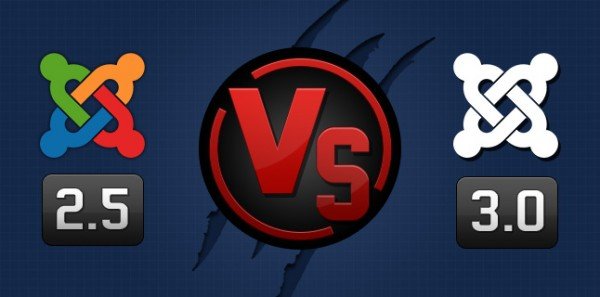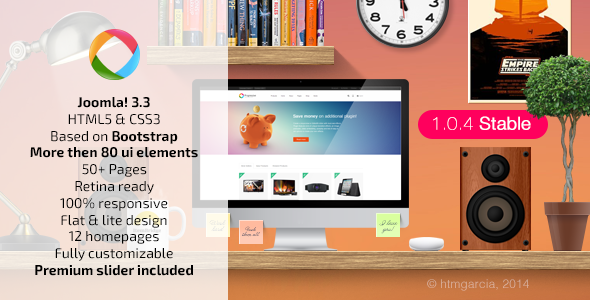Time and now Joomla has been pleasantly surprising its fans by offering new versions with bug fixes and improved performance. The latest Joomla version available for users is Joomla 3.0.0, which was released on September 27th, 2012 with some major updates and developments. Surpassing the popularity of the previous Joomla version 2.5, Joomla 3.0 has indeed become one of the hot favorites among globally located Joomla users. If you’re an avid Joomla user but unfamiliar with the key differences between the Joomla version 2.5 and 3.0 then you’ve landed on the right post. Here, I’ve captured 10 key differences between the two very popular Joomla versions.
 1. Non-responsive VS Responsive
1. Non-responsive VS Responsive
While the Joomla 2.5 version was non-responsive, the all-new Joomla 3.0 version is mobile device ready. You can view a fully responsive front-end with back-end also inheriting the responsive features. Hence, websites running on Joomla 3.0 will be easily manageable even while you’re on a move.
2. No Bootstrap VS Equipped with Bootstrap
Joomla 2.5 doesn’t come with basic CSS Integrated into it. On the other hand, Joomla 3.0 has been built on Bootstrap, making way for better UX for the end user.
3. Without JUI VS With JUI
Joomla 2.5 version doesn’t come with JUI while the version 3.0 comes with JUI. The term JUI(Joomla User Interface) refers to the library of tools that play a vital role in drastically reducing the coding time during component development process.
4. Tedious 7-step installation VS Faster 3 step installation
While the Joomla 2.5 version comes with a 7 step long installation process, the latest version 3.0 can be installed within 3 simple steps.The UI of the installation screen is different for both Joomla versions 2.5 and 3.0.
5. Boring VS Polished Article Manager Interface
Talking about the back-end panel in Joomla 2.5 and Joomla 3.0, the former one has a plain, boring Article Manager while the latter ones comes with a better organized Article Manager with a flawless filtering system and defined icons.
6. Lower VS Higher PHP/MySQL requirements
Unlike the Joomla version 25 which requires only PHP 5.2.4 and MySQL 5.0.1, the latest Joomla version 3.0 requires a higher PHP and MySQL requirements viz: PHP 5.3.1 and MySQL 5.1.
7. Saving complete articles VS Saving blank articles
In comparison to Joomla 2.5 which allows website administrators to create full-detailed articles, the new Joomla version 3.0 renders you support for creating and saving blank articles with no textual content.
8. Packaged with Mototools VS Packaged with Jquery
Joomla version 2.5 is packaged with the traditional Mototools option in the back-end. But this option no longer exists in the Joomla 3.0 version. The new Joomla version is packaged with JQuery in the core. Mototools is no longer the primary javascript library interface in the new Joomla 3.0 version.
9. The age-old traditional admin template VS the all-improved contemporary admin template
While the Joomla version 2.5 still comes with the old admin template named Bluestork, the version 3.0 has an all-improved administrator template named after the Egyptian goddess Isis. This new admin template has been built using the flexible Bootstrap grid layout and is hence fully-responsive.
10. Non-responsive Front-end template VS Responsive front-end template
As compared to the plain, non-responsive front-end template available with Joomla 2.5, the latest version 3.0 has a fully responsive minimal front-end template named Protostar. Powered by the very popular Bootstrap framework, Protostar is highly versatile and can be easily customized using a variety of options. With this template, you can easily toggle on or off the parameter that plays a vital role in deciding whether or not you should use Google fonts for your website. The natively clean bootstrap customized front-end template renders a new standard for the Joomla template.
Summing Up
Hope after going through the above mentioned differences, you’d have got a clearer insight into the Joomla version that can help you build fully-functional and visually appealing websites and web applications.
About The Author:
Maria Mincey is a blogger who loves to share everything about web development and new web design technologies initiatives. She currently works as a chief writer for the Joomla to WordPress conversion company – WordPrax Ltd. Follow her on Twitter @mariamincey64.





Leave a Reply